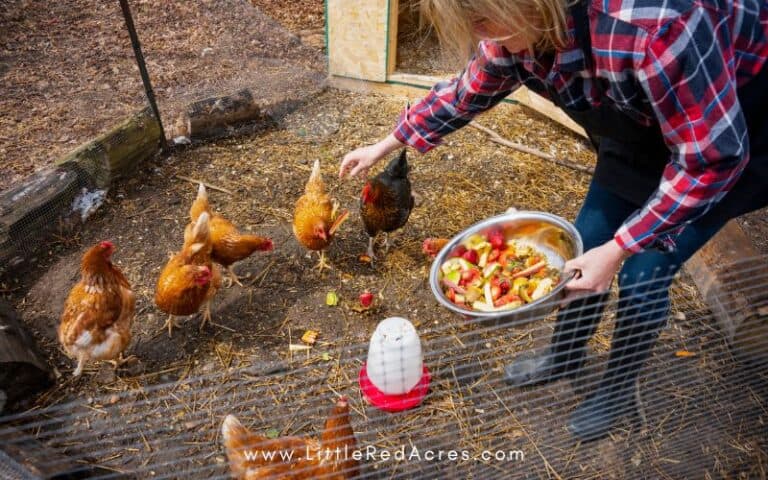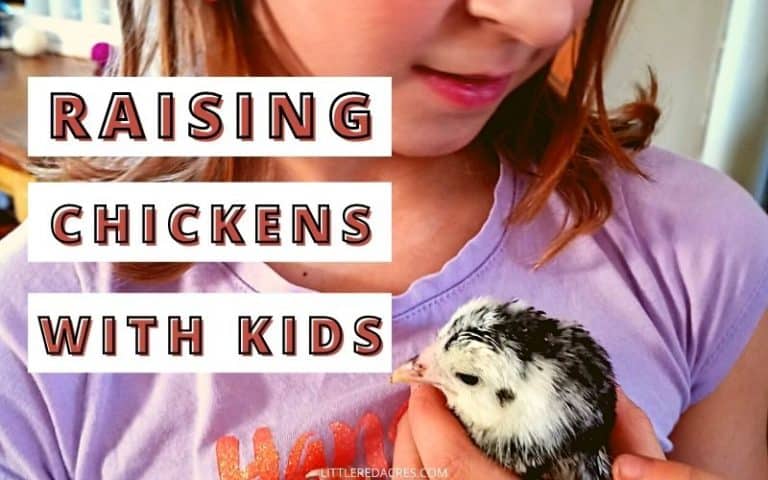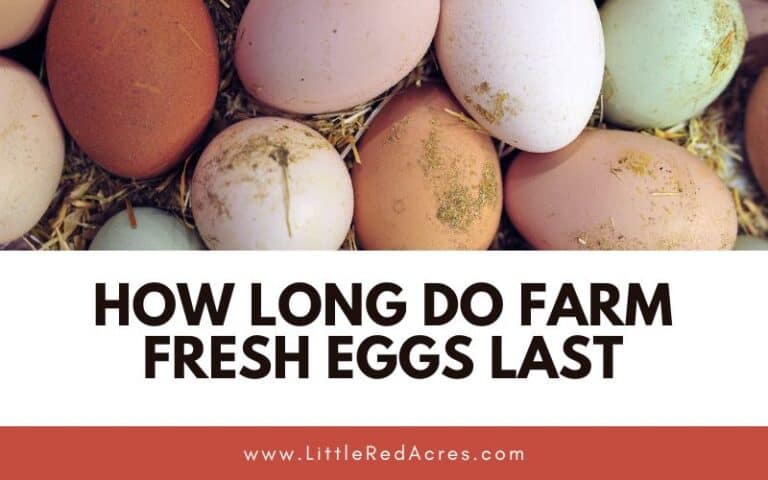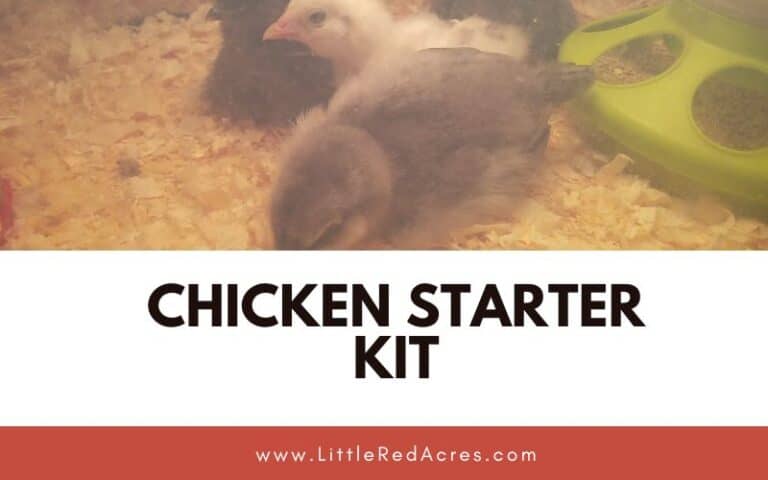Reasons to Love Brahma Chickens
I love Brahma chickens. They are my favorite breed of chicken, it could be because they were the first chickens we got, it could be their fancy leg and feet feathers, their wonderful personalities, or just because they are my chickens. I want you to love them too!
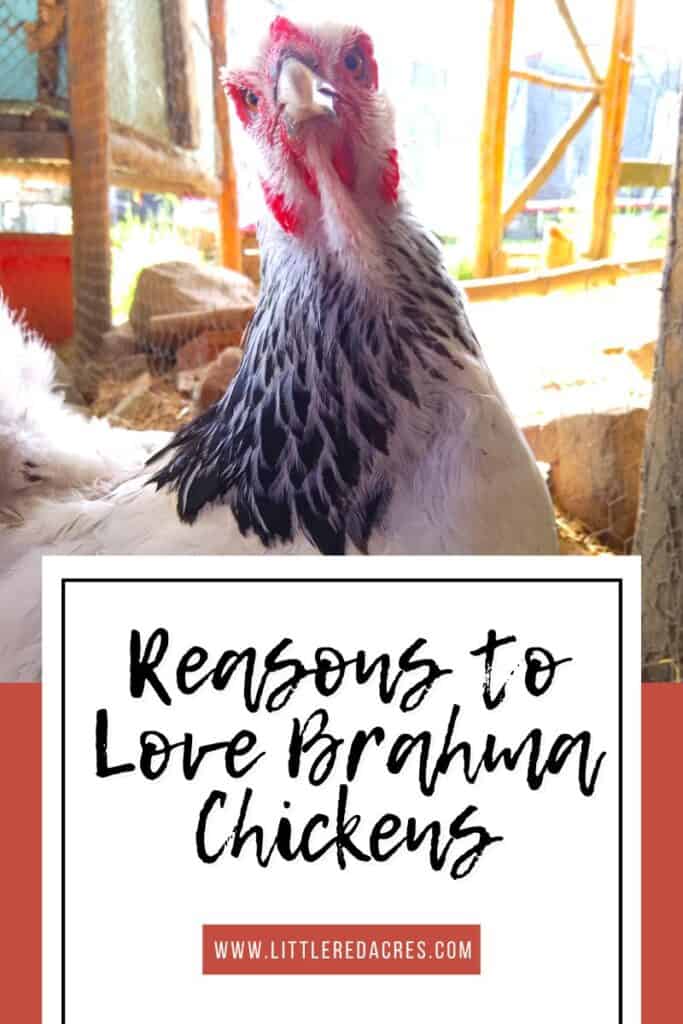
This post may contain affiliate links, see my disclosure policy for more information.
Reasons to Love Brahma Chickens
There are Standard Brahmas and Bantam Brahmas. I do have both so we can do a great comparison of them.
They come in three standard colors: light (white), dark (black), and buff.
There are more colors being bred but as a fountain, those are the colors.
Get updates & freebies delivered to your inbox!
Brahma Chicken Breed as a Whole
Majestic Appearance
Standard Brahma chickens are known for their impressive size and appearance. They are one of the largest chicken breeds, with roosters weighing up to 12 pounds and hens weighing around 9.5 pounds.
Their large size, feathered legs, and well-rounded bodies give them a regal and majestic presence in any flock.
Bantam Brahma chickens are miniature versions of regular breeds. They can be about half or two-thirds the size of regular birds. Bantam Brahmas roosters weigh about 2.5 lbs and hens weigh slightly less at 2 lbs.
Standard Brahma (Light)
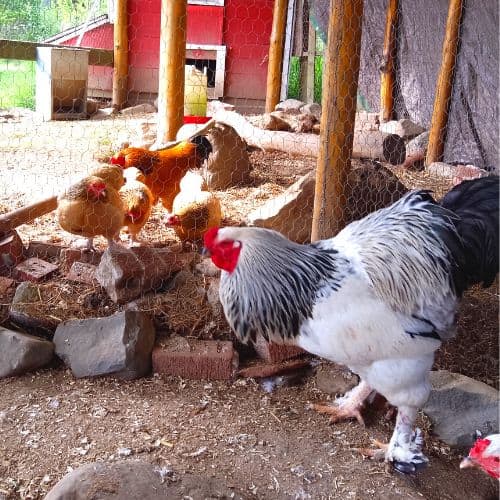
Standard Brahma roosters weigh up to 12 pounds and hens weigh around 9.5 pounds.
Bantam Brahma (Buff)
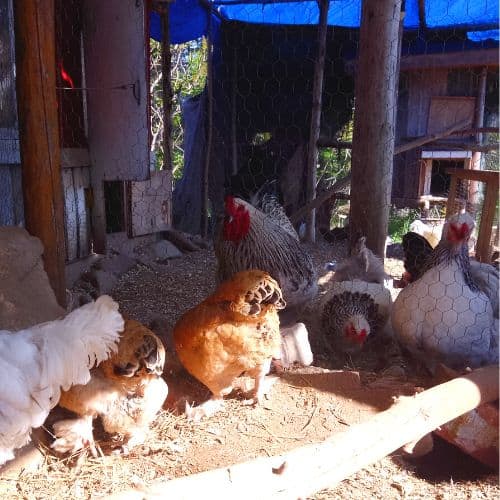
Bantam Brahmas roosters weigh about 2.5 lbs and hens weigh slightly less at 2 lbs.
Gentle and Docile Nature
One of the most endearing qualities of Standard Brahma chickens is their gentle and docile nature. They are known for being calm and friendly birds, making them great additions to a backyard flock.
Their laid-back temperament makes them easy to handle, especially for families with children or novice chicken keepers.
Yes, you can still get an asshole rooster. I had one, he would attack me at any time or for any reason, and the final straw was when he flew up my dress while I was bent over collecting eggs. How do you come back from that?
We found that to get the best roosters, the most gentle and docile, don't keep the rooster that is head of the flock. Whenever we hatch chicks to keep we end up with roosters. We never keep the rooster that has become the head dude. We keep one of the lower roosters.
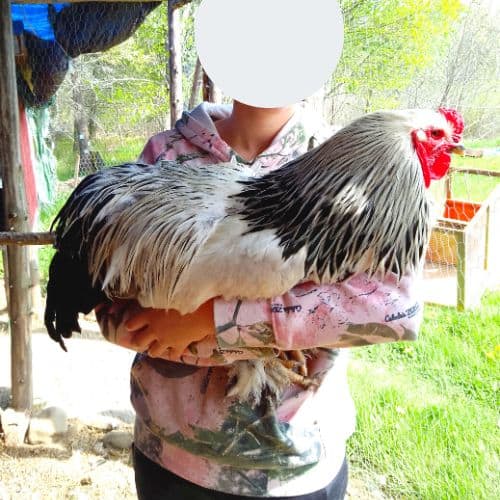
Cold Hardy
Standard Brahma chickens have a remarkable tolerance for cold weather, thanks to their thick feathering and small pea comb.
Excellent Egg Layers
While Standard Brahmas are primarily known for their ornamental value, they are also productive egg layers. Hens typically start laying eggs around 6-7 months of age and can produce around 150-200 large brown eggs per year.
Their reliable egg production makes them a practical choice for those seeking a balance between ornamental and productive breeds. And with how much feed the big chickens eat, you want them laying eggs.
They lay light brown eggs. Bantams are medium-sized and Standards large an extra large egg.
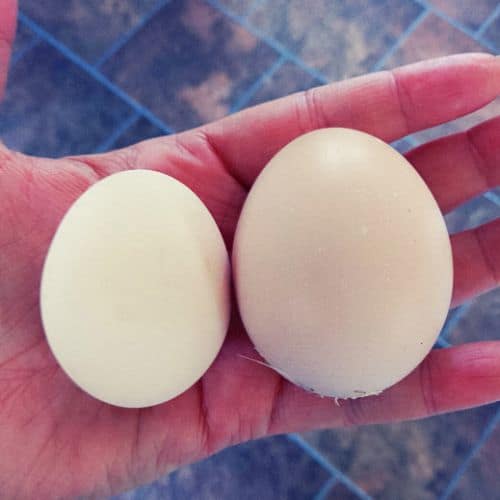
Dual-Purpose Birds
In addition to their egg-laying capabilities, Brahma chickens are considered dual-purpose birds. While their meat may not be as common in modern commercial settings, they have historically been valued for their high-quality and flavorful meat.
For those interested in self-sustainability or wanting to raise chickens for both eggs and meat, these birds offer a versatile option. You'll get more meat off of a Standard VS Bantam of course.
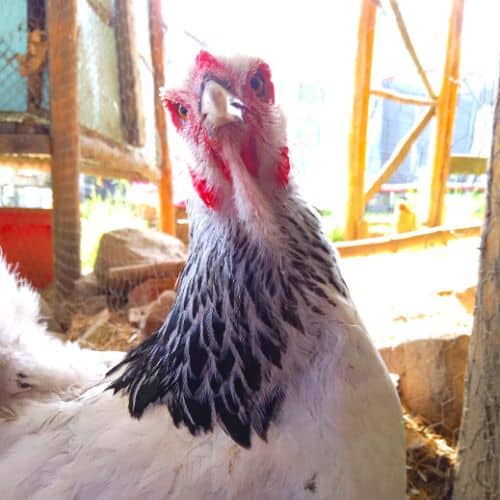
Excellent Brooding Skills
Brahmas are known for their excellent brooding skills, making them natural mothers and nurturers.
If you have the desire to hatch your own chicks or expand your flock through natural means, Brahma hens are reliable brooders. Their commitment to sitting on eggs and caring for chicks is impressive and can be a delightful experience for chicken enthusiasts.
From my experience, the Bantams are going to brood more, in fact, my Standard Brahma hens have not gone broody before.
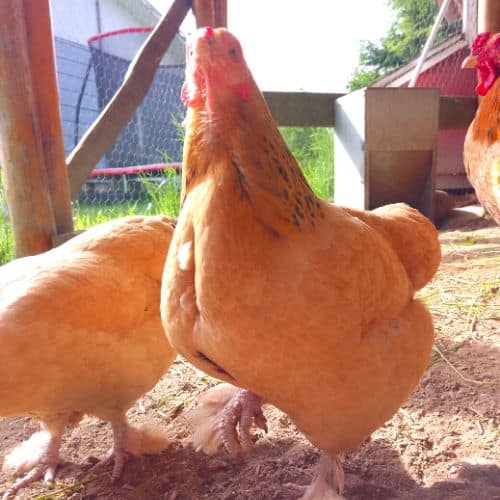
In my opinion, you can't get a better bird. They are quiet, even the rooster crow is quieter than other breeds, including silkies.
They have been perfect for beginner chicken owners, for children of all ages.




